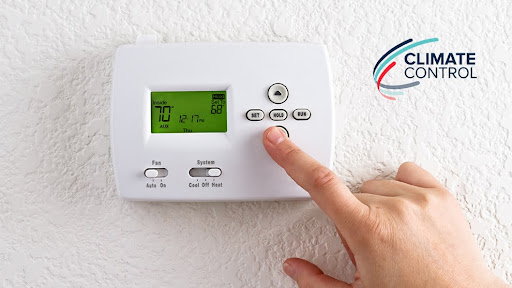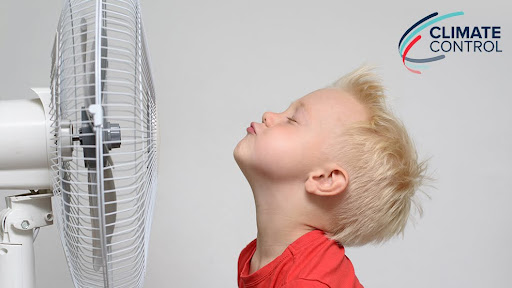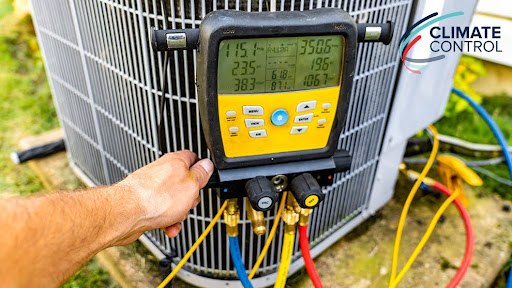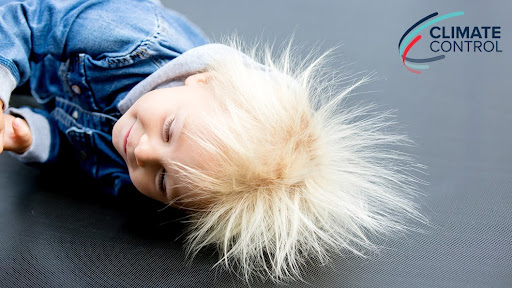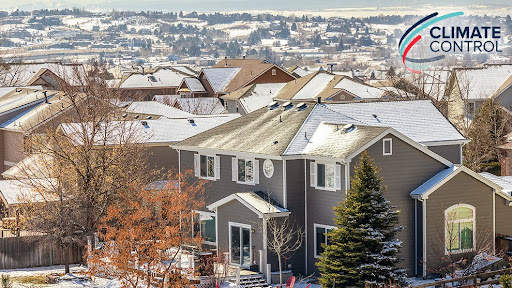Have you ever looked at the thermostat in your Glenwood Springs, CO home and wondered why it says, “Auxiliary Heat On”? Don’t worry; you’re not alone! Many people find this message confusing, but today, Climate Control Company is here to explain it in simple terms.
Your Thermostat: The Temperature Keeper
First, let’s understand what a thermostat does. A thermostat is like the event coordinator of your heating system. Its job is to keep your home at the right temperature, whether it’s chilly outside or scorching hot. Think of it as the VIP in charge of making sure your heating and cooling system is doing what it’s supposed to when needed.
Types of Heating Systems
There are different types of heating systems in homes, but for this discussion, we’ll focus on two common ones: heat pumps and dual heating systems.
1. Heat Pump: A heat pump is like a magical machine that can both heat and cool your home. It works by moving heat from one place to another. In the winter, it takes heat from outside and brings it inside to warm your home. In the summer, it does the opposite, taking heat from inside and sending it outside to cool your home.
2. Dual Heating System: Some homes have a dual heating system, which means they use two different methods to heat the house. Usually, this involves a heat pump and a backup heating system, like a gas furnace.
What Is Auxiliary Heat?
Auxiliary heat, often called “aux heat” for short, comes into play when your thermostat thinks the heat pump alone isn’t enough to warm your home. Generally, heat pumps work really well in mild to moderately cold weather. However, when the outside temperature falls below 40 degrees Fahrenheit, standard heat pumps might struggle to extract enough heat from the outdoor air to keep your home cozy.
This is where auxiliary heat comes in. It’s like the superhero sidekick to your heat pump. When the temperature drops too low for the heat pump to handle, the thermostat signals the auxiliary heat to kick in and help out. It’s like having a backup plan for those extra chilly days.
The exception to this general rule of thumb is the cold climate heat pump, which is designed to work in extreme winter weather.
Why Does It Say “Auxiliary Heat On”?
So, why does your thermostat show the message “Auxiliary Heat On”? When your thermostat senses that it’s too cold for the heat pump to do all the work on its own, it turns on the auxiliary heat to provide extra warmth.
Think of it this way: Imagine you’re playing a game, and you start to feel tired. You might ask a friend to help you out. In this scenario, your friend is like the auxiliary heat. Your thermostat is saying, “Hey, it’s getting really cold, and I need some extra help to keep your home warm. Auxiliary heat, can you step in, please?”
The setting on the thermostat alerts you to the fact that your back-up heat system is up and running as it’s intended to do.
Saving Energy and Money
You may wonder if using auxiliary heat costs more money. If the temperatures are low enough to warrant using auxiliary heat, it’s a given that more energy will be used. However, it’s essential for keeping your home warm during those freezing Colorado winter days. The good news is that most thermostats are pretty smart these days. They know when to use the heat pump and when to call in the auxiliary heat.
Smart Thermostats: The Brainy Helpers
Smart thermostats are like the brainy helpers of the thermostat world. They can learn from your habits and adjust the heating system accordingly. When it’s not too cold outside, they’ll stick with the heat pump to save energy and money. But when the temperature drops, they’ll call in the auxiliary heat to ensure you stay toasty.
Programmable Thermostats: The Automatic Pilots
Programmable thermostats are “set it and forget it,” so you can keep your inside temperatures exactly where you want them without manually changing the setting on the thermostat every time. For example, a programmable thermostat allows you to set the temperature higher during the cooling season or lower during the winter when your home is unoccupied. No more wasted money providing comfort to an empty house.
Upgrade Your Thermostat or Heating System
So, there you have it! “Auxiliary Heat On” is just your thermostat’s way of saying, “I’m working extra hard to keep your home warm because it’s really cold outside.” It’s a team effort between your heat pump and the auxiliary heat, and they’re both there to make sure you stay comfy during those chilly days.
To learn more about installing a smart or programmable thermostat, upgrading your heat pump to a cold climate heat pump, or adding an auxiliary heating system to your existing home comfort system, contact Climate Control Company today.
Climate Control Company. Comfort Driven, Colorado Style since 1956.

